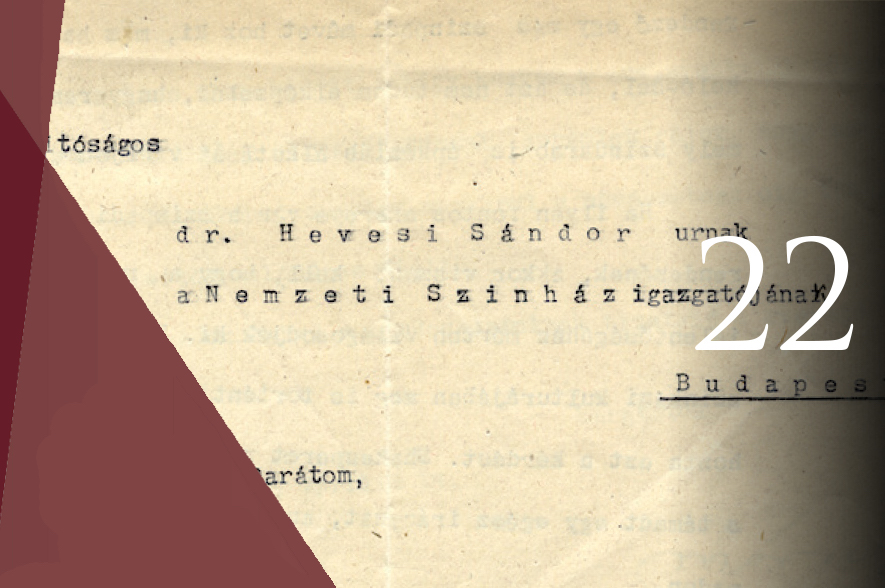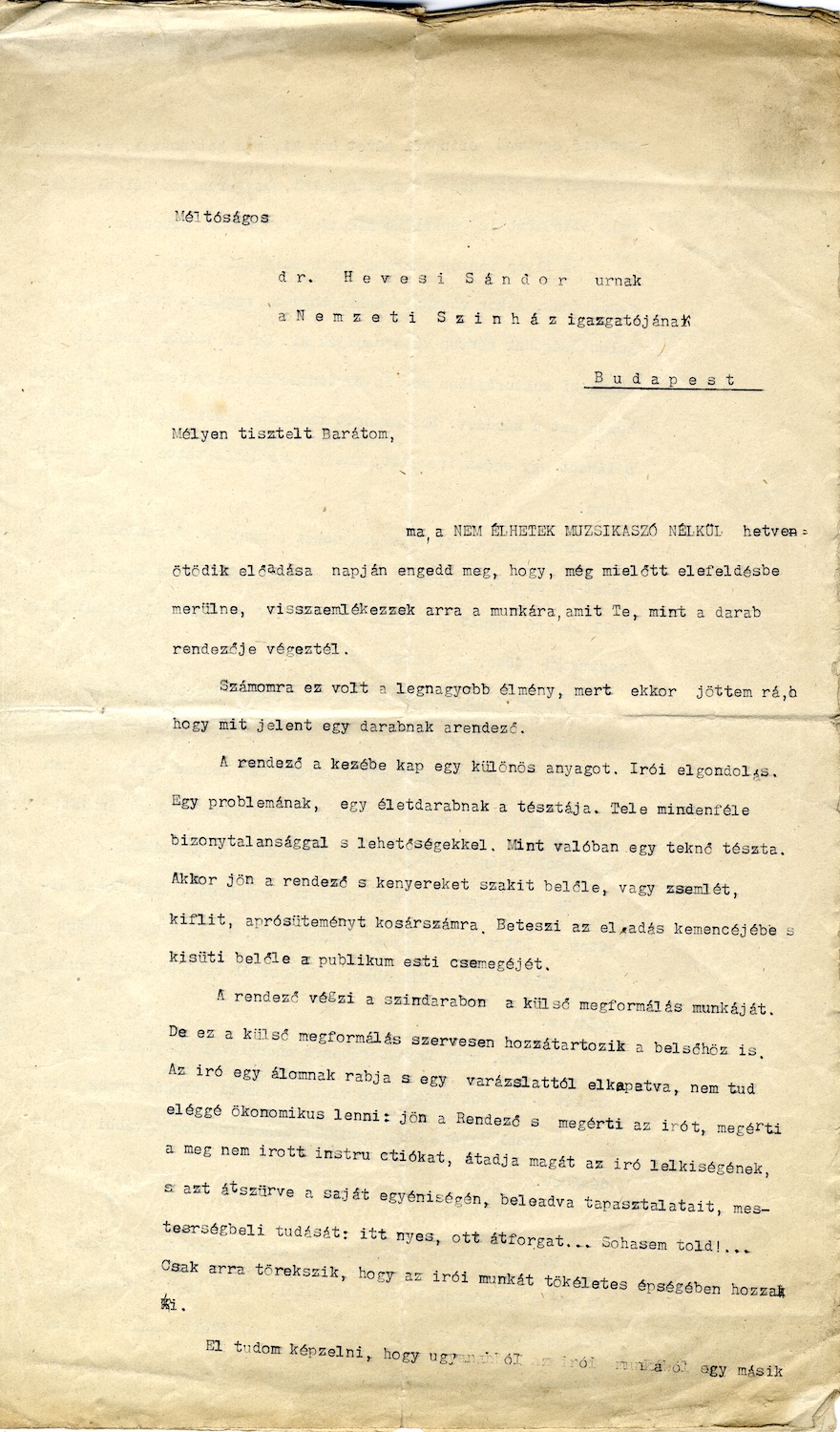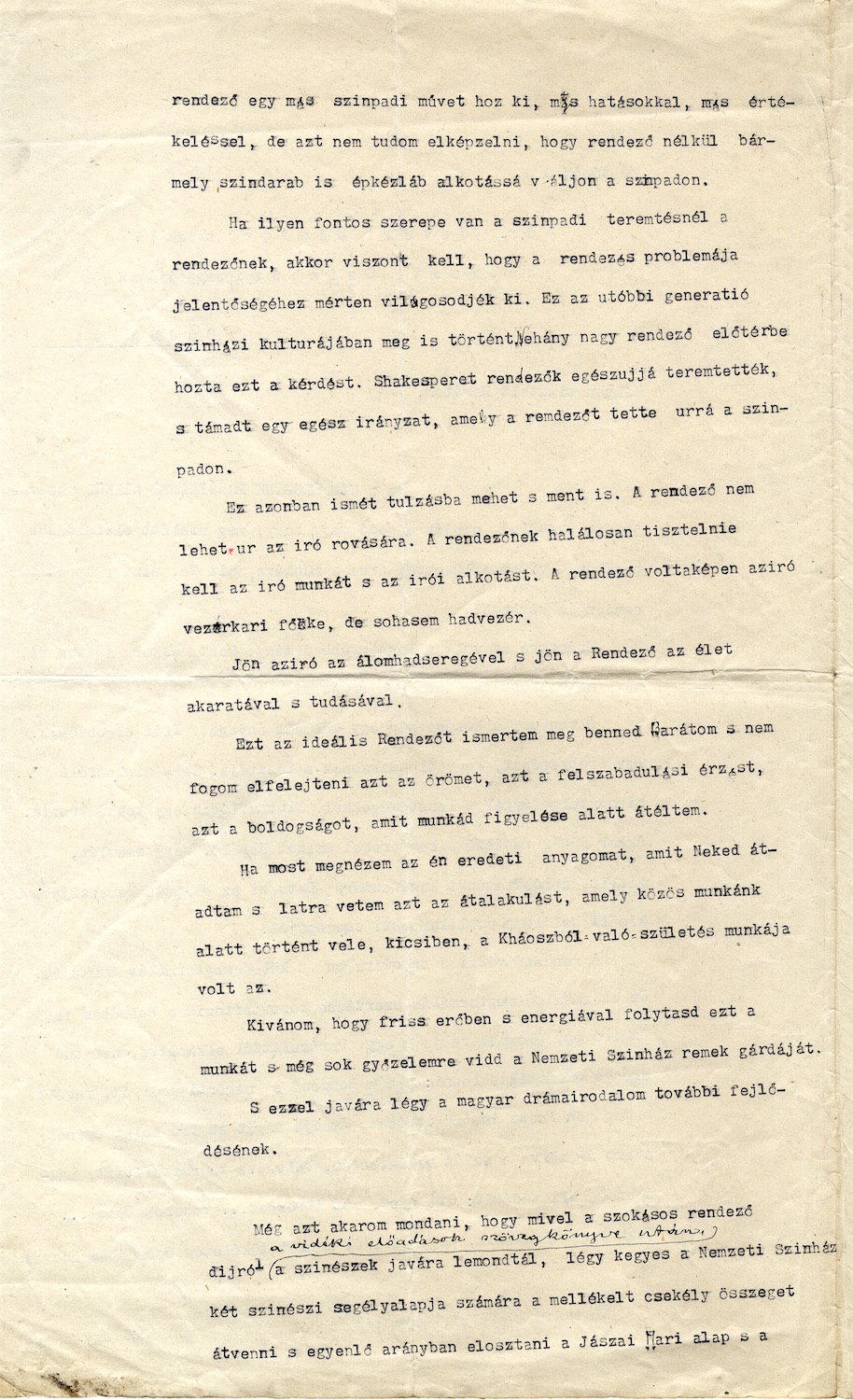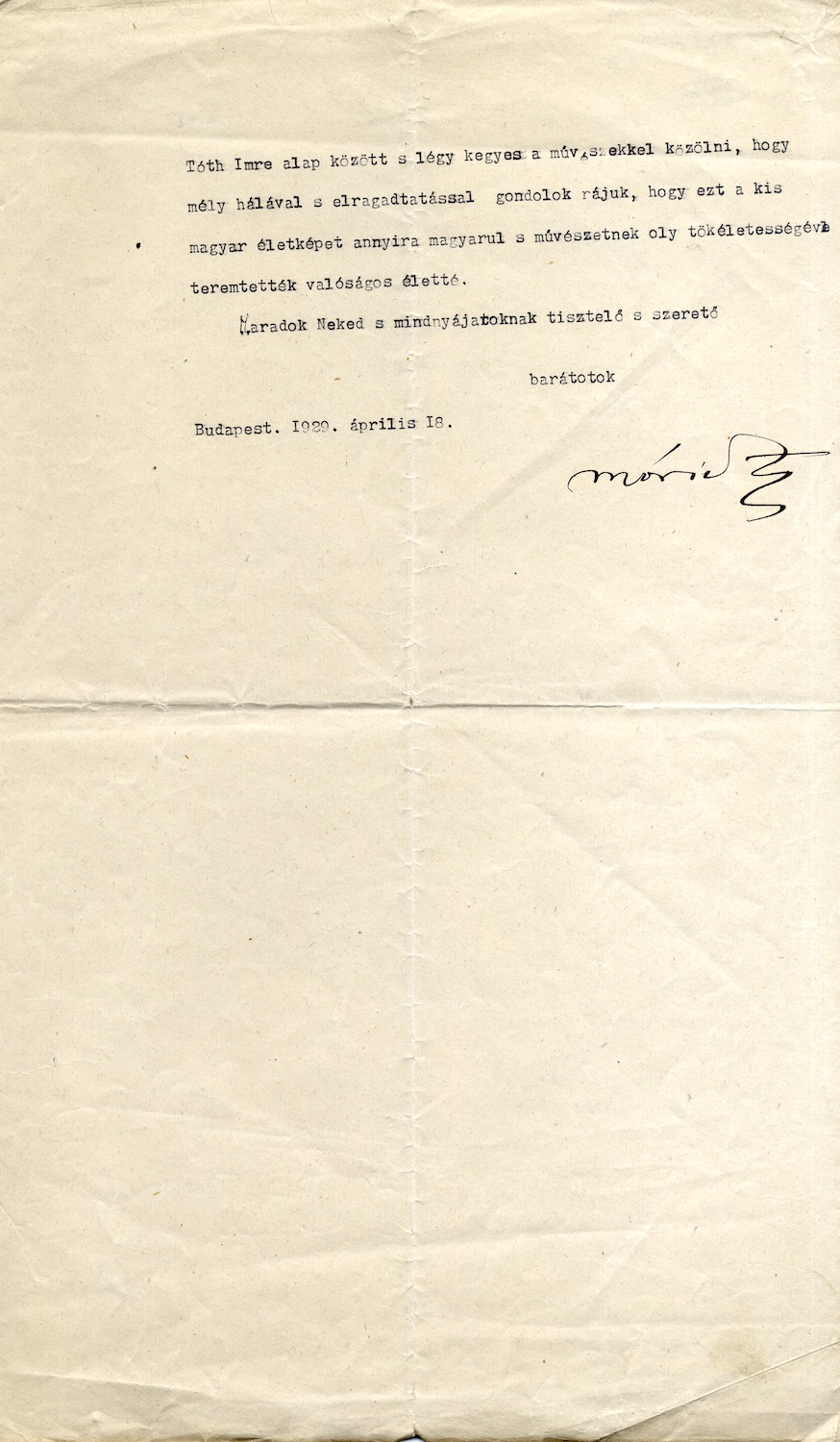
„Levelet írtam Hevesinek, amelyben a rendező-problémát részleteztem. Legyen ez jutalma” – jegyzete fel Móricz Zsigmond naplójában 1929. április 18-án. Az Országos Színháztörténeti Múzeum 1959-ben vásárolta meg az örökösöktől Hevesi Sándor levelezését. A tekintélyes gyűjteményben Móricz Zsigmondnak tizenegy levele található. Élénk fény derül belőlük arra a jelentős szerepre, melyet Hevesi Sándor játszott a regényíró színműveinek színpadra segítésében. A Légy jó mindhaláláig című regényből készült színjáték hetvenötödik előadásának napján Móricz Hevesihez intézett levelében a rendező munkájáról kialakult érdekes nézeteit jegyezte le.
„A rendező végzi a színdarabon a külső megformálás munkáját. De ez a külső megformálás szervesen hozzátartozik a belsőhöz is. Az író egy álomnak a rabja s egy varázslattól elkapatva, nem tud eléggé ökonomikus lenni: jön a Rendező s megérti az írót, megérti a meg nem értett instrukciókat, átadja magát az író lelkiségének, s azt átszűrve a saját egyéniségén, beleadva tapasztalatait, mesterségbeli tudását: itt nyes, ott átforgat… Sohasem told!… Csak arra törekszik, hogy az írói munkát tökéletes épségben hozza ki.”
Letter of Zsigmond Móricz to Sándor Heves following the premiere of Be Faithful Unto Death, 18 April 1929.
’I wrote a letter to Hevesi in which I detailed the directing issue. Let this be his reward.’ – says a diary entry of Zsigmond Móricz, the famous Hungarian novelist, dated 18 April 1929. The Hungarian Theatre Museum and Institute bought the correspondence of Sándor Hevesi in 1959 from his heirs. The prestigious collection contains eleven letters by Zsigmond Móricz, which gives a compelling image in the role Hevesi played in the staging of Móricz’s works. In the letter written to Hevesi on the day of the 75th performance of a stage adaptation of the novel Be Faithful Unto Death Móricz drafted some of his interesting views of theatre directing.
‘The director gives an external shape to the play. But this external shape is also organically connected to the internal part. The writer is the prisoner of a dream and, as if taken by a charm, could never be economical enough: there comes the Director and manages to understand the writer, understands the not understood instructions, surrenders himself to the spirituality of the writer and, by filtering this through his own personality, adds his own experiences, technical knowledge to the mix, he cuts, he twists… Though never adds a thing! … He only strives to get the writer’s work to emerge in its perfect integrity.’



